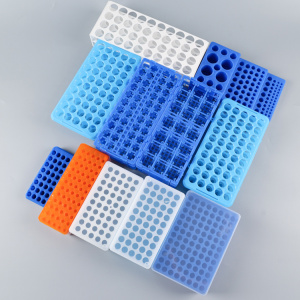How many different classification criteria of ELISA plates do you know?
The ELISA plate is a commonly used equipment in the laboratory. It is controlled by electronic speed and digitally displays the time. When the actual oscillation time reaches the set oscillation time, it will automatically alarm.
Do you know the classification standard of ELISA plate?
1. Divide according to the number of wells
Divided into 96 wells and 48 wells, of which 96 wells are commonly used now, because the microplate reader is used with the microplate reader, and the current microplate reader makes the most 96 wells, so the ELISA 96 well plate is also required when purchasing, In order to adapt to the market, manufacturers basically make 96 wells.
2. Divide according to its bottom
Divided into flat bottom, U-shaped bottom, V-shaped bottom. The refractive index of the flat bottom is low, which is suitable for detection on the microplate reader; the refractive index of the microplate plate with the U-shaped bottom is higher, which is convenient for operations such as sample addition, aspiration, and mixing. Observe the color changes to determine whether there is a corresponding immune response. The V-bottomed ELISA plate can accurately draw samples.
3. Divide by color
Divided into transparent, black, white. Transparent is commonly used for general ELISA experiments. Compared with the transparent board, there are also opaque boards for luminescence detection, generally black and white. The black ELISA plate itself will absorb light, so its signal is much lower than that of the white plate, so it is generally used to detect strong light, such as fluorescence detection. The white ELISA plate is used for weak light detection and is often used for general chemiluminescence. In addition, the black microtiter plate can also reduce the problems caused by non-specific reactions. So, can luminescence detection be performed with a general microtiter plate? The answer is no, because generally the light emitted from a chemiluminescent reaction is isotropic, that is, emitted equally in all directions. If a transparent board is used, the light will radiate not only from the vertical direction, but also from the horizontal direction. It is easy to pass through the gaps between the various holes and the hole walls. In this case, when the light is strong, the influence between adjacent wells will be great, so it is impossible to use a transparent ELISA plate for chemiluminescence experiments.




